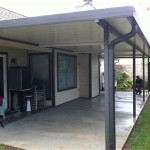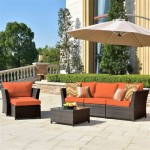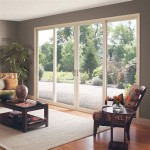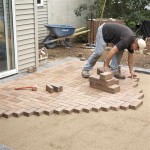Outdoor Patio Planters: Enhancing Your Outdoor Living Space
Outdoor patio planters serve as a versatile and aesthetically pleasing element in landscape design, transforming simple patios into vibrant and inviting outdoor living spaces. The selection of appropriate planters, coupled with thoughtful plant choices, can dramatically enhance the ambiance, functionality, and overall appeal of any patio, regardless of its size or style. This article will explore the various considerations involved in selecting and utilizing outdoor patio planters to maximize their impact.
Planter Material and Durability
The material composition of an outdoor patio planter significantly influences its durability, aesthetics, and suitability for specific climates and plant types. Numerous materials are available, each exhibiting unique characteristics that must be carefully evaluated before making a purchase. Common materials include terracotta, ceramic, concrete, wood, metal, and plastic, along with more specialized options like fiberglass and resin.
Terracotta: Terracotta planters are a classic choice, known for their porous nature which allows for excellent aeration and drainage, benefiting plants that prefer drier soil conditions. However, terracotta is susceptible to cracking in freezing temperatures, making it less suitable for regions experiencing harsh winters unless properly protected or brought indoors. The natural earthy tones of terracotta provide a rustic and timeless aesthetic.
Ceramic: Ceramic planters offer a wider range of colors, glazes, and designs compared to terracotta. They are generally less porous, retaining moisture more effectively, which can be advantageous in hotter climates. Ceramic planters are also vulnerable to frost damage, requiring similar precautions as terracotta in cold regions. The finish of ceramic planters can significantly contribute to the overall style of the patio.
Concrete: Concrete planters are exceptionally durable and resistant to the elements, making them ideal for year-round outdoor use in diverse climates. Their weight provides stability, preventing them from being easily toppled by wind or accidental contact. Concrete planters can be molded into various shapes and sizes, offering design flexibility. Their neutral gray tones can be easily integrated into a wide range of patio designs.
Wood: Wooden planters offer a natural and warm aesthetic, blending seamlessly with outdoor environments. The durability of wooden planters depends heavily on the type of wood used and the application of protective treatments. Rot-resistant woods like cedar, redwood, and teak are preferred. Regular sealing and staining are necessary to prevent water damage and decay. Wood planters can be customized with paint, stain, or decorative elements.
Metal: Metal planters, such as those made from galvanized steel, aluminum, or copper, offer a modern and industrial aesthetic. They are typically durable and weather-resistant, although some metals may be susceptible to rust if not properly treated. Metal planters can be lightweight, making them easy to move, and are available in various shapes and finishes. The reflective properties of some metals can add visual interest to the patio.
Plastic: Plastic planters are a lightweight and cost-effective option, available in a wide array of colors, shapes, and sizes. They are resistant to cracking and fading, making them suitable for various climates. However, plastic planters can appear less aesthetically pleasing than other materials and may degrade over time with prolonged exposure to sunlight. Recycled plastic planters offer a more environmentally friendly option.
Fiberglass and Resin: Fiberglass and resin planters are lightweight, durable, and weather-resistant. They can be molded into complex shapes and finishes, mimicking the appearance of more expensive materials like stone or concrete. These planters are less prone to cracking and fading compared to plastic and offer a good balance of aesthetics and functionality.
Plant Selection and Arrangement
The selection of plants is crucial for creating a visually appealing and thriving patio garden. The choice of plants should be guided by the local climate, the amount of sunlight the patio receives, and the desired aesthetic. Considerations should also be given to the mature size of the plants to avoid overcrowding the planters.
Sunlight Requirements: Understanding the amount of sunlight a patio receives is paramount. Plants are categorized as full sun (6+ hours of direct sunlight), partial sun (4-6 hours of direct sunlight), partial shade (2-4 hours of direct sunlight), and full shade (less than 2 hours of direct sunlight). Selecting plants that thrive in the available light conditions is essential for their health and vigor.
Climate Considerations: The local climate dictates the types of plants that can successfully grow outdoors year-round. In regions with cold winters, selecting hardy perennials or annuals that can be easily replaced each year is necessary. In warmer climates, a wider range of tropical and subtropical plants can be cultivated. Paying attention to frost dates and average temperatures will inform plant choices.
Plant Combinations: A well-designed planter arrangement incorporates a variety of plant types, textures, and colors to create visual interest. A common approach involves using a "thriller," "filler," and "spiller" combination. The "thriller" is a tall, focal point plant; the "filler" provides mid-height texture and color; and the "spiller" cascades over the edge of the planter. Examples include combining a tall ornamental grass (thriller), colorful petunias (filler), and trailing ivy (spiller).
Container Size and Soil: The size of the planter should be adequate to accommodate the root systems of the selected plants. Overcrowding can lead to stunted growth and nutrient deficiencies. Using a high-quality potting mix that provides good drainage and aeration is essential. Amending the soil with compost or slow-release fertilizer can further enhance plant growth.
Plant Placement: The arrangement of planters on the patio should consider the flow of traffic and the overall layout of the space. Grouping planters of varying sizes and shapes can create visual interest, while aligning planters along edges can define boundaries and create a sense of enclosure. Tall plants should be placed strategically to provide shade or screen unwanted views.
Maintenance: Regular watering, fertilizing, and pruning are essential for maintaining healthy and attractive patio plants. Monitoring plants for pests and diseases and taking prompt action is crucial. Deadheading spent flowers encourages continued blooming. Providing support for climbing plants, such as trellises or stakes, may be necessary. Adjusting watering schedules based on weather conditions is also important.
Patio Planter Design and Aesthetics
The aesthetic design of patio planters plays a significant role in enhancing the overall ambiance of the outdoor space. The style, color, and arrangement of planters should complement the existing architecture, furniture, and landscaping. Thoughtful design considerations can transform a simple patio into a cohesive and visually appealing outdoor retreat.
Style Considerations: The style of the planters should align with the overall design aesthetic of the patio. For example, a modern patio might feature sleek, geometric planters made from metal or concrete, while a rustic patio might incorporate terracotta or wooden planters. The choice of planter style should reflect the homeowner's personal taste and preferences.
Color Palette: The color of the planters can significantly impact the overall mood of the patio. Neutral colors, such as white, gray, or beige, offer a versatile backdrop for colorful plants. Bold colors, such as red, blue, or yellow, can add a vibrant and energetic touch. The color of the planters should complement the surrounding environment and existing color scheme.
Size and Scale: The size and scale of the planters should be proportionate to the size of the patio. Large planters can make a statement in a spacious patio, while smaller planters are better suited for smaller spaces. Using planters of varying sizes can create visual interest and depth. The height of the planters should also be considered, with taller planters used to create vertical interest.
Planter Grouping and Arrangement: Grouping planters strategically can create focal points and define different zones within the patio. Arranging planters symmetrically can create a sense of formality, while arranging them asymmetrically can create a more relaxed and organic feel. Consider placing planters near seating areas, walkways, or entryways to enhance their impact.
Accessorizing Planters: Adding accessories to planters, such as decorative stones, moss, or small sculptures, can enhance their visual appeal. Trellises, obelisks, or other structures can be added to support climbing plants and create vertical interest. Lighting can also be incorporated to illuminate planters at night, adding a dramatic and inviting touch.
Seasonal Adjustments: The aesthetic of the patio planters can be adjusted seasonally to reflect the changing seasons. In the spring, colorful flowering plants can be used to celebrate new growth. In the summer, lush foliage and tropical plants can create a vibrant and exotic atmosphere. In the fall, warm-toned foliage and ornamental grasses can add a cozy and autumnal feel. In the winter, evergreen plants and decorative branches can provide visual interest during the dormant season.
By carefully considering the material, plant selection, and aesthetic design of outdoor patio planters, homeowners can transform their patios into inviting and visually stunning outdoor living spaces. The strategic use of planters can enhance the ambiance, functionality, and overall appeal of any patio, creating a sanctuary for relaxation, entertainment, and enjoyment of the natural world.

Outdoor Planters Patio Plant Pots Pottery Barn

Planters Can Transform Your Outdoor Space Here S How To Use Them The Seattle Times

16 Container Gardening Ideas Potted Plant We Love

Planters The Home Depot

Outdoor Planters Patio Plant Pots Pottery Barn

Ping For Outdoor Planters The New York Times

Outdoor Planters Pots Garden Tools For The Patio Crate Barrel

Planters Can Transform Your Outdoor Space Here S How To Use Them The Seattle Times

How To Decorate With The Perfect Outdoor Planters At Home

Outdoor Planters 20 Color Options Eplanters








